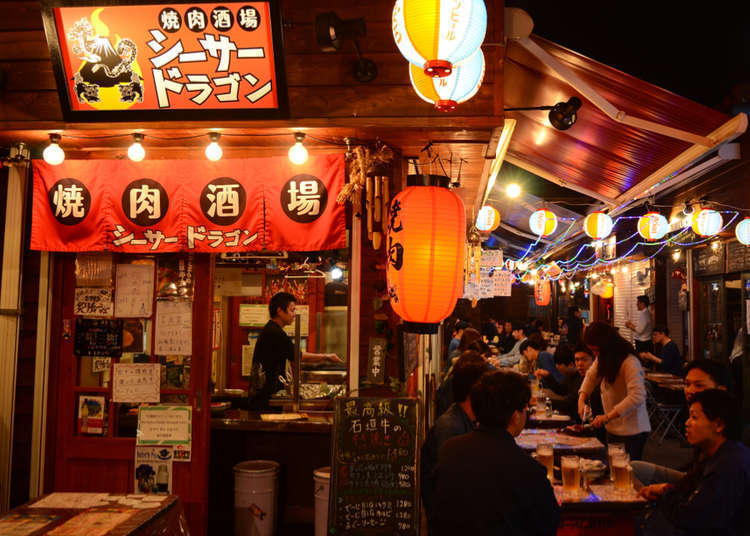
One of the first things you’ll notice when visiting Japan, and Tokyo in particular, is the sheer number of restaurants literally packed by the dozens into endless files of buildings! Many people in Japan eat out at lunch breaks, or after work, but not only then. In fact part of Japanese culture is socializing while sharing a meal, or some drinks. This reflects even in the workplace itself where events like the nomikai (company drinking parties) are a very frequent occurrence.
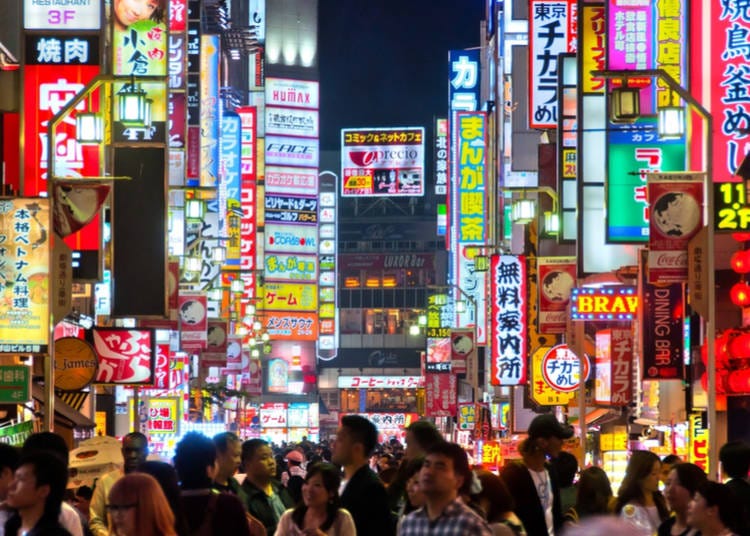
It’s hard to pinpoint why exactly there’s such a high demand for eateries in Tokyo (and Japan as a whole), but what’s certain is that the demand is being met by the supply. Nevertheless sometimes it can be really hard to get a seat in a restaurant, particularly a famous or popular one (trends have a lot of traction in Japan). There’s a simple solution to this issue, of course: reserve a table. In Japan, though, the process might be more complicated, or even different from what one might expect, if used to other countries. And that’s why we are here!
Things to Know Before Reserving
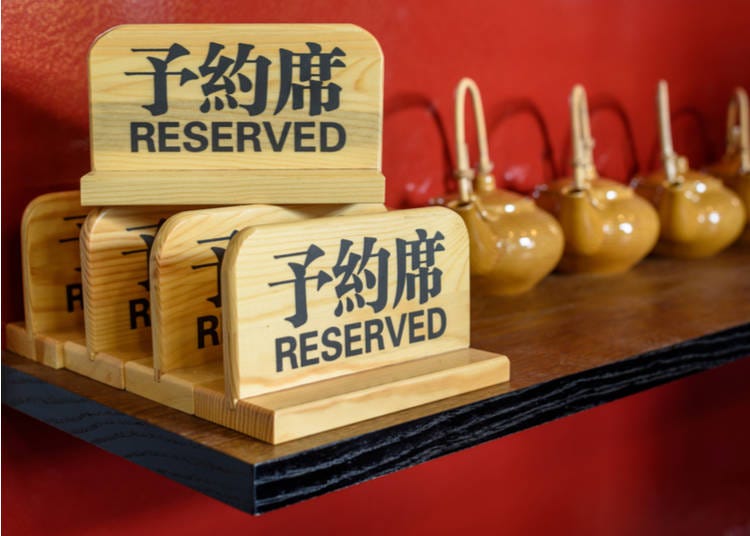
Before we start, it’s important to keep in mind that some smaller restaurants in Tokyo will not take lunch reservations. This could be due to a reduced number of staff, or to encourage more people to visit the restaurant (lunch is usually cheaper than dinner). Whatever the reason, if you’re interested in visiting one of these restaurants, your only option, at lunchtime, might be standing in line.
Some of the more popular restaurants (i.e. with higher ratings on sites like Gurunavi and TripAdvisor), as it often happens, might require you to book days (or even weeks) in advance. If you want to try one of these places out, make sure to plan ahead.
Making Reservations by Phone
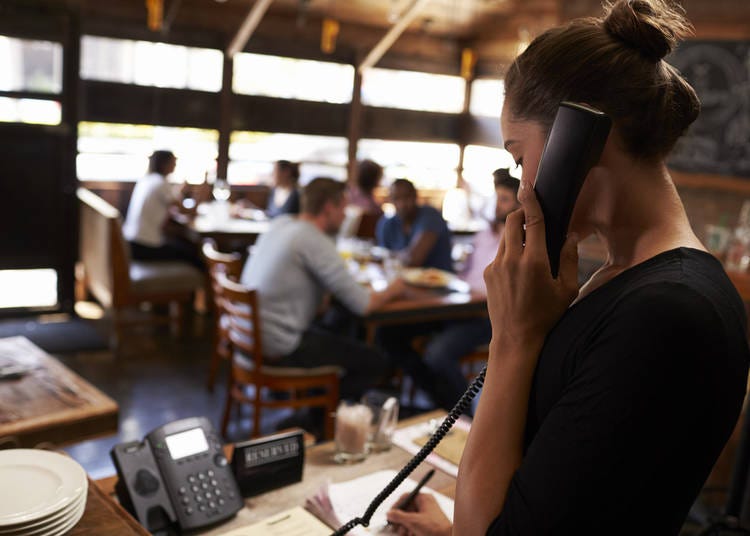
Of course, one of the first things that would come to mind is to reserve via phone.
This is certainly the most direct method, but sometimes it’s also the most challenging. Finding a restaurant with staff fluent in English or languages other than Japanese may be very hard (unless you’re trying to dine in a restaurant within a hotel). With this in mind, the big problem, for those of you not fluent in Japanese, would be the language barrier.
This may seem like an insurmountable issue. Of course we can’t learn a language in the two months before our trip. While that is true, keep in mind that reserving a table anywhere in the world, follows more or less the same pattern of questions and answers. Of course, if yourself, or one of your friends can speak Japanese, things will get much easier, but if that’s not the case, do not despair. A few properly placed sentences will get you through the ordeal.
What to ask
Kyou no yoyaku o onegaishimasu (I would like to make a reservation for today)
Note that you could also replace kyou (today) with ashita (tomorrow); asatte (the day after tomorrow); raishuu (next week); raishuu no getsuyoubi (next Monday).
Kyou no go ji kara wa aitemasuka? (Do you have availability for today at 5?) Of course, similarly to what stated above, you could change the day accordingly, or the time. In this case the time was 5pm (go ji). To make a reservation for the half-hour, use han (e.g. 5:30 would be "go ji han".)
- 5 o'clock
- go ji
- 6 o'clock
- roku ji
- 7 o'clock
- shichi ji
- 8 o'clock
- hachi ji
- 9 o'clock
- ku ji
- 10 o'clock
- ju ji
- :30
- han
- Sunday
- Nichiyobi
- Monday
- Getsuyobi
- Tuesday
- Kayobi
- Wednesday
- Suiyobi
- Thursday
- Mokuyobi
- Friday
- Kinyobi
- Saturday
- Doyobi
For most people, though, the problem is not really asking for things, but understanding what other people say in response. Of course it would be almost impossible to learn all the possible variations of answers one might hear, but there are some very common ones that you’re more likely to encounter and which are very useful to learn. You will also notice that most other variations are very similar to these more basic expressions.
What the staff might say or ask and how to answer
Nan mei sama desuka? (how many people?)
Answer: X mei desu (simply add a number in the place of the X).
Tabaco wa suimasuka? (do you smoke cigarettes?)
Many restaurants have separated smoking and non-smoking sections. Here, replying with a simple iie (no), or hai (yes) will suffice).
And now a more challenging one, but don’t worry! It will not get much harder than this. The staff might tell you: go ji wa muri desukedo, go ji han ii desuka? (We have no availability for 5pm, but would 5:30 work?). Again, here, a simple yes or no would suffice.
Onamae wa nan desuka? (What is your name?)
Answer: “[Your name] desu.” Straightforward.
Denwa bango wa nan desuka? (What is your telephone number?)
Answer: This can get a little tricky especially if you have an international phone number. Local numbers - such as your hotel - are preferred. Say out the number as below and complete with "desu".
- 0
- zero
- 1
- ichi
- 2
- ni
- 3
- san
- 4
- yon
- 5
- go
- 6
- roku
- 7
- shichi
- 8
- hachi
- 9
- kyu
Once finished, the staff will likely repeat everything back to you. If it sounds right, say "Hai. Yoroshiku onegaishimasu" and you are all done.
Online Reservations
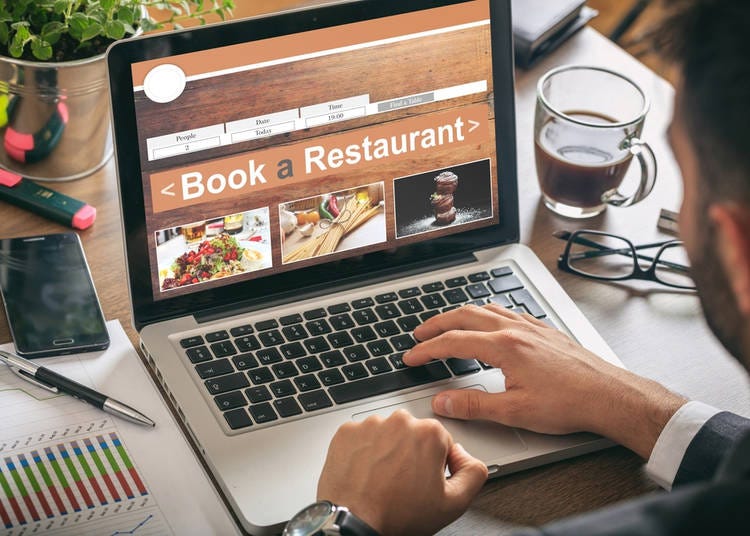
Even with a cheat sheet, booking over the phone might be something that you would rather avoid, or you simply might not be able to do. A good way to bypass phone-reservations would be to reserve online.
While more and more restaurants in Japan are extending their reservation methods to include also the online one, some smaller restaurants might not have this option available. Bigger restaurants, chain restaurants, hotel restaurants will very likely have an online-booking option, though. The challenge at this point is that Japanese restaurants’ websites rarely have an English version. Assuming you can’t read Japanese, you could easily input the name of the restaurant in gurunavi.com or TripAdvisor to find the listing in English.
Hotel Concierge

Once again, though, language could be an issue here. There are a few ways around this problem. One is a hotel concierge. This option may not be within everyone’s budget, but oftentimes high-end hotels will essentially handle all sorts of booking for you. Restaurants, cars, taxis, food delivery is all done through the hotel concierge. You’ll need to worry about nothing.
Alternatively, several websites offer concierge-like services for free, but only for high-end restaurants. A cheaper alternative would be to ask the staff of the hotel in which you’re staying. More often than not, even though they are not a concierge service per se, they will be happy to make a phone call to book a restaurant for you.
Live Japan's Restaurant Reservations
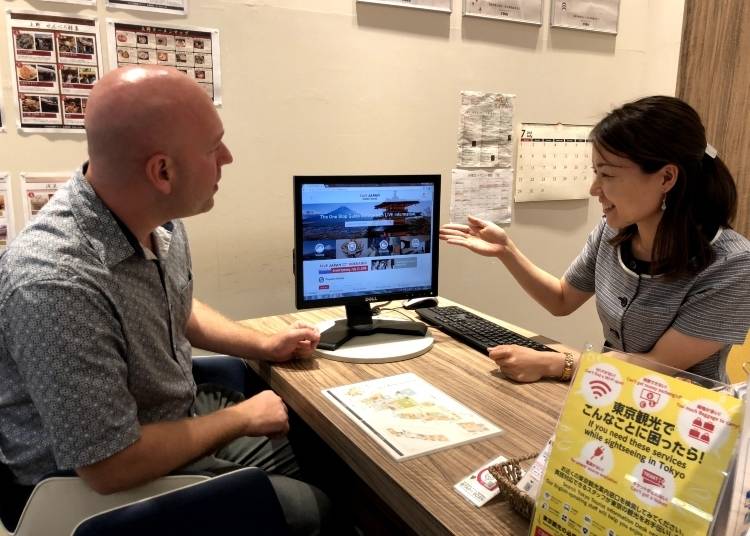
For those of you who prefer being more independent, but can’t speak the language, not to worry! Live Japan's parent company, Gurunavi, is one of Japan's largest restaurant search sites and you can make reservations directly via Live Japan's restaurant search page!
Things to keep in mind
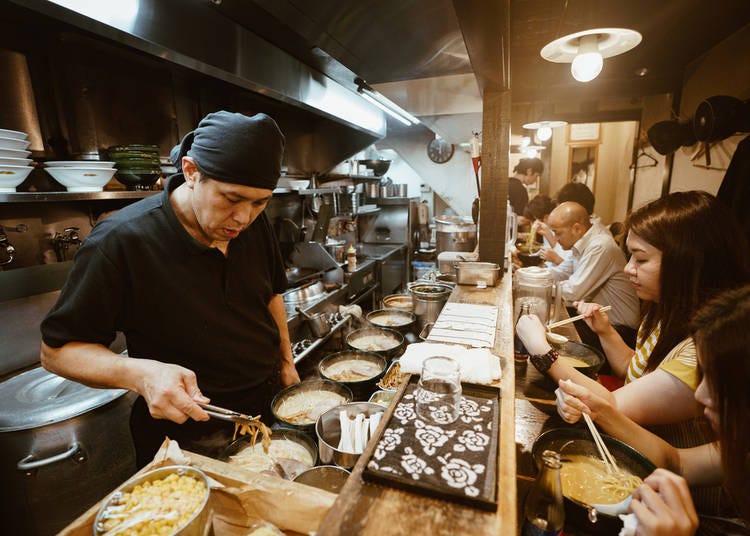
Regardless of the method you decide to use to book your table, there are some things that might be useful to keep in mind both when booking and after.
Tip #1: You may have to make reservations via proxy
In recent years some restaurants in Japan have stopped taking reservations from foreign visitors. While this is less common in very touristic areas, it’s not unheard of elsewhere. This kind of attitude towards potential foreign patrons could come as a shock, and it might even spark some anger, but there is a solid, practical reason behind it. According to statistics more and more restaurants have faced increasing sudden reservation cancellations, or no-shows from foreigners. Especially in areas with very high rents for the locales, too many cancellations means a pretty heavy blow to the monthly profit. Sushi restaurants in particular will also obtain fresh ingredients, much of which will go to waste in the event of a no-show - at the restaurant’s expense. These will usually accept reservations through concierges and credit card companies, but rarely from individuals.
Furthermore, it seems that according to some working in the restoration business “foreign customers don’t understand Japanese dining culture”, in cases like ramen or udon restaurants, for example. These establishments are usually regarded as ‘fast food’ by locals, but according to some, foreign visitors, not knowing about this aspect of these restaurants, linger for too long (e.g. an hour or more), creating longer lines, and preventing the restaurant from serving more patrons.
This attitude can be understandably unsettling, but it’s not impossible to see things from the perspective of the restaurant owners. When we visit another country, things may be significantly different from what we’d expect and, without knowing, we might be doing something offensive, or even actually damaging. With a little bit of research and insider knowledge, you may be part of what turns things around from “we would rather not take reservations from foreigners” to “we welcome as many foreigners as possible here”.
Tip #2: Be on time for your reservation - or call ahead
When you reserve a table, regardless of method, make sure that you’re on time at the restaurant. It does help to know that “on time” in Japan means “5-10 minutes early”. Of course you never know what could happen. You might realize you’re going to be late. If that’s the case, try to let the restaurant know with as much notice as possible, so that they can make the proper arrangements.
Usually restaurants in Japan will not hold your table for more than 10-15 minutes after the scheduled time. Of course knowing beforehand where to go would help.
In case you need to cancel a reservation, or you want to let the restaurant know you’ll be late, refer to this cheat sheet:
■ I would like to cancel the reservation – yoyaku wo canceru shitai desu
■ This is (insert name with which you booked). I reserved for X people at XYZ o’clock. Can I cancel? – XYZ ni X de yoyaku shita (name) desukedo canceru onegaishimasu.
Note: the following is a very used phrase, but it could be complicated to pull off.
■ Excuse me. This is (insert name). I reserved for (insert time), but would it be possible to cancel my reservation? Sumimasen. Kyou no (insert time) ni yoyakushita, (insert name) desukeredomo, yoyaku no canceru wo onegaidekimasu deshouka?
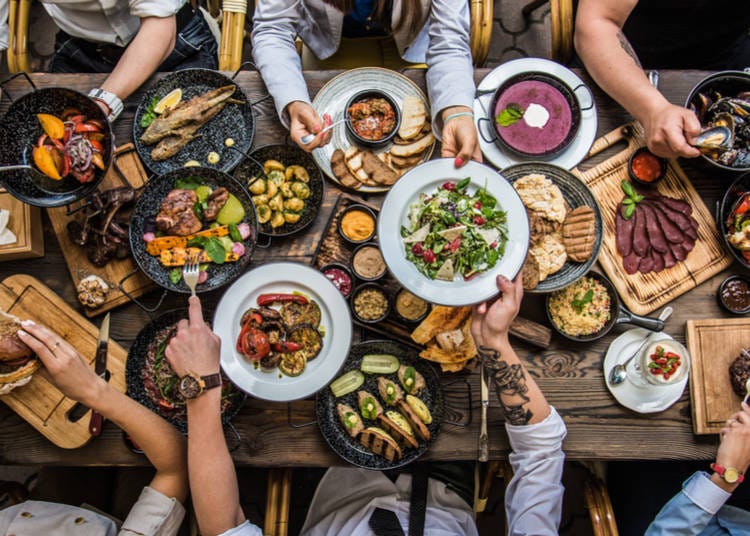
Tip #3: Allergy or dietary restriction? Let staff know in advance
Many of us have some dietary restriction due to choices or medical conditions. In most restaurants in America and in several western countries, all we need to do is let the staff know and ask them to make some changes. Of course this can be done in Japan as well, and if possible, the staff will be happy to comply.
Yet, one thing to keep in mind is that, usually, Japanese cuisine and restaurants are very specialized. In other words, the dishes they prepare can’t be changed much (and even if they could, the kitchen might not be able to).
For these reasons, sometimes, substitutions or changes to a dish might not be available – and typically are not available without advance notice. It helps, if you’re interested in a specialized restaurant, to know beforehand if there are items on the menu that you could enjoy without major changes.
Of course if you use concierge services or, if you use specific websites, you will be able to find restaurants that cater to your specific dietary restrictions. When you make your reservation, be sure to inform the staff of your situation up-front.
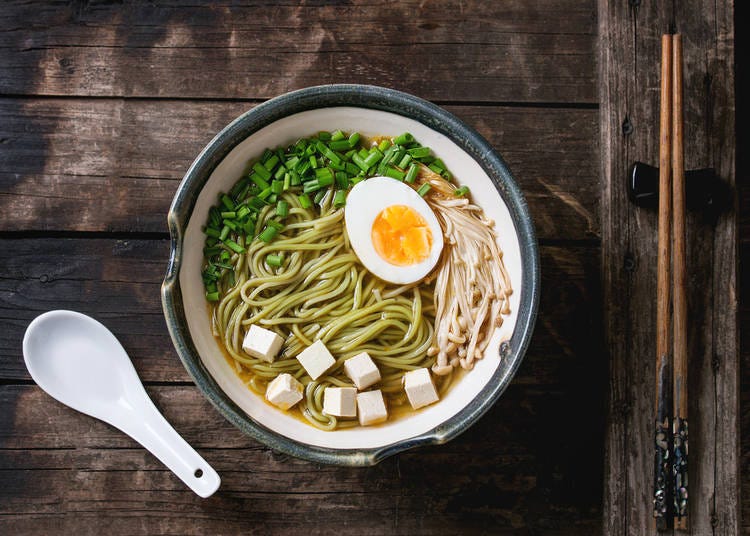
Tip #4: Long line = popular spot
Popular places in Japan can be easily identifiable from the very long lines forming from the entrance. These places don’t usually take reservations and the only option might seem to be that of joining the queue. At times, though, if you ask the staff, you will notice that they give out numbered tickets.
This is not a reservation per se, but the restaurant gives tickets based on how many tables they expect to be able to serve on a given day/night. Once they run out of tickets they won’t accept any more customers. Even having a ticket will not grant you faster access to the restaurant, but it means that you will get in. If you do stumble upon one of these seemingly very popular eateries, make sure whether you should just stand in line or get a ticket from the staff before you do so.
As always, speaking a little Japanese or being with people who can, will help. Some restaurants are happy to have customers from all over the world and will help to the point of actually guiding you via phone to their locale (especially when it’s a place relatively hard to find). While you may be lucky and find staff proficient in English (or your native language), more likely than not they will be able to speak fluently only in Japanese. Regardless, the staff will try to help any way they can.
Final word
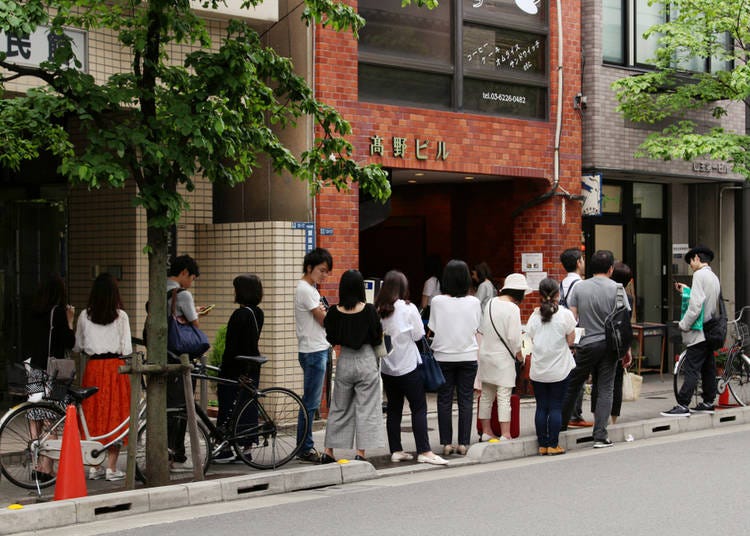
One of the recurrent themes, when dining in Japan seems to be that the staff might not be able to speak any language other than Japanese. While this may often be true, almost all restaurants (probably with the exception of small, family-run ones) will have English menus.
Sometimes the translation is not very accurate, but it gives a clear enough idea of what you’re ordering. The staff might ask you if you want an English menu (eigo no menu irimasuka?). Otherwise you could ask them if they have one (eigo no menu arimasuka?).
Japan is a land of many stunning sights, interesting culture, modernization perfectly espoused with tradition, and absolutely amazing food!
It may look pretty daunting to approach food, restaurants, and mannerism that we may not be fully accustomed to (or which could be completely different from what we are used to). Yet it’s not reason enough to miss on the many amazing dishes you can try while visiting the country. With just a little bit of preparation and attention to detail, the reward will be well worth it!
Photo credit (main image): cowardlion / Shutterstock.com
*Prices and options mentioned are subject to change.
*Unless stated otherwise, all prices include tax.
Popular Tours & Activitiess
-

How to Get Don Quijote's Exclusive 2025-2026 Winter Gift (+Tax-Free Savings)
-
Ad

Discover the "Miraculous Forest" in the Heart of Tokyo: The Institute for Nature Study (9 Minutes from JR Meguro Station)
-

Strawberries, Style, and Tokyo’s Coolest Neighborhood: Winter Afternoon Tea in Kichijoji
by: Guest Contributor
-

Japan’s Shinkansen Is About to Change Travel in an Unexpected Way
by: Guest Contributor
-

This Winter, Godzilla Takes Over Haneda Airport
by: Guest Contributor
-

Jujutsu Kaisen Takes Over JR East With a Wrapped Shinkansen This Winter
by: Guest Contributor
Inspiration for Accommodations
-

Enjoy Mt. Fuji from the Comfort of Your Room! Recommended Ryokan with Mt. Fuji View
-

Stay Near the Cherry Blossoms! Hotels for Cherry Blossom Viewing in Tokyo
-

Family-Friendly Hotels with Free Shuttle to Disneyland: Convenient Access for a Magical Stay
-

Top Ranked Hakone Hotels with Mt. Fuji View: Enjoy Stunning Scenery from Your Private Space
-

Convenient Tokyo Hotels with Airport Shuttle: Ideal for Families and Heavy Luggage
-

Stunning Tokyo Tower View Hotels: Enjoy Spectacular Scenery from Your Private Space
-

Convenient Asakusa Hotels with Kitchens: Ideal for Extended Family Visits
-

Experience Luxury: Hakone's 10 Best Five-Star Accommodations
-

Enjoy Mt. Fuji Autumn Leaves! Top Hotels Near the Popular Autumn Leaves Corridor
-

Experience Hakone Fall Foliage from Your Room with Stunning Views
-
Ad

Japan Marks 150 Years of Railway Service! Our Report on the "Beyond Station Expo UENO" Cultural Event
-

The Best of Japan: 11 Major Cities Every Traveler Should Visit
-

It’s GAKUENSAI Season: We’ve Visited Shinjuku’s Joint Campus Festival of Tokyo’s Universities!
-

16 Secrets About Mt. Fuji, the Symbol of Japan: Even Japanese People Don’t Know That?!
-

Dream Guide to Tokyo’s Top 8 Super Fluffy Pancake Shops
-

Experiencing Japan's 'Omotenashi' Craze: 9 Shocking Things About Japanese Customer Service
- #best ramen tokyo
- #what to buy in ameyoko
- #what to bring to japan
- #new years in tokyo
- #best izakaya shinjuku
- #things to do tokyo
- #japanese nail trends
- #what to do in odaiba
- #onsen tattoo friendly tokyo
- #daiso
- #best sushi ginza
- #japanese convenience store snacks
- #best yakiniku shibuya
- #japanese fashion culture
- #best japanese soft drinks


















